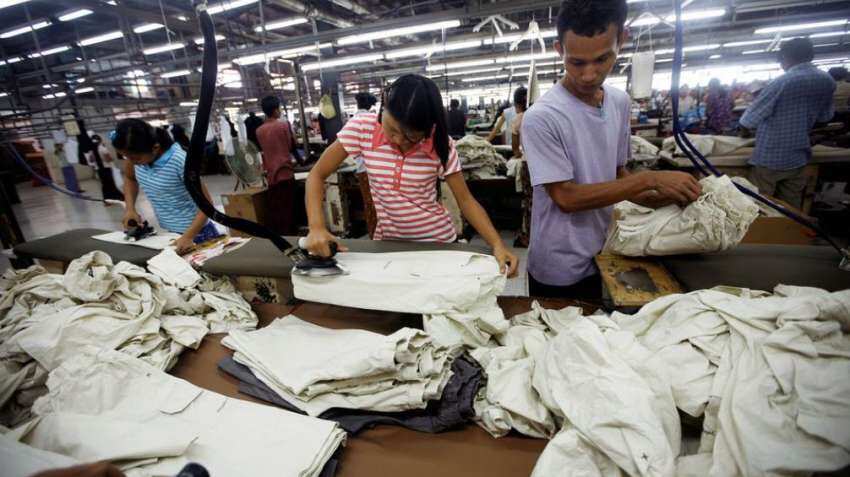Budget 2022 Expectations: ‘Textile sector expects fund allocation for skill development, automation and replacement of old machinery’
The garment and textile industries have huge potential to contribute towards the vision of ‘Atmanirbhar Bharat’ and expect to look forward to a favourable consideration in the upcoming budget 2022.

The Union Budget 2022-23 is expected to be presented by the Union Minister of Finance Nirmala Sitharaman on February 1, 2022. In the previous budget, the main focus of the government was on health and rural infrastructure development. However, this year, it is expected that the government can make many important announcements to strengthen the economy and empower the common man.
The garment and textile industries have huge potential to contribute towards the vision of ‘Atmanirbhar Bharat’ and expect to look forward to a favourable consideration in the upcoming budget 2022.
Speaking on the expectations from Budget 2022 on the garment and textile sectors, Ranjana Rani, co-founder, Draax Fashions said: “The garment and textile sectors are labour-intensive, and both the sectors need to be looked different than other industries. There are certain issues, which have been specific to this sector, and addressing them in a timely manner will help the entrepreneurs unlock their true potential. The garment industry is facing inflationary pressure with increase in prices of raw materials, packing, and freight.”
Simultaneously, other initiatives like providing soft loans for the initial couple of years for buying raw materials and the introduction of a bill discounting mechanism through government implementing agencies would go a long way to help the sector. In short, access to affordable funds at minimal collateral would be the key for the industry to flourish, she added.
At the same time, bringing drawback in exports to 18 per cent instead of 4 per cent will encourage exports from India and help the sector immensely, added Ruchi Jain, co-founder, Draax Fashions.
“The government also needs to encourage women entrepreneurs, particularly belonging to the MSME segment. Reducing income tax rate for at least 5 years would incentivise the creation of more manufacturing facilities and help generate employment,” Jain further added.
A one-time subsidy on capital expenditure, especially the purchase of machinery, would reduce the setup cost. A large part of the industry is still using traditional tools and technology, which needs upgradation. “We expect a specific fund allocation for skill development, automation and replacement of old machinery to new efficient machines,” Rani mentioned.
“We need to encourage more domestic production of fabrics/yarn and reduce dependency on imports. Further, measures need to be taken to increase the export competitiveness of the sector, which is losing to countries like Bangladesh and Sri Lanka in recent years. An increase in RoDTEP rates is urgently needed,” Jain said.
(Disclaimer: The views/suggestions/advises expressed here in this article is solely by experts. Zee Business suggests its readers to consult with their investment advisers before making any financial decision.)
Get Latest Business News, Stock Market Updates and Videos; Check your tax outgo through Income Tax Calculator and save money through our Personal Finance coverage. Check Business Breaking News Live on Zee Business Twitter and Facebook. Subscribe on YouTube.
11:25 AM IST














 Rajya Sabha MP Dr Subhash Chandra hails Union Budget 2022; calls PM Narendra Modi a visionary who is taking country, society forward
Rajya Sabha MP Dr Subhash Chandra hails Union Budget 2022; calls PM Narendra Modi a visionary who is taking country, society forward Budget 2022: Big takeaway for general insurance companies! Government allows surety bonds as substitute for bank guarantees
Budget 2022: Big takeaway for general insurance companies! Government allows surety bonds as substitute for bank guarantees Budget 2022: Digital Currency Versus Cryptocurrency – FM Nirmala Sitharaman says this on definition, taxation
Budget 2022: Digital Currency Versus Cryptocurrency – FM Nirmala Sitharaman says this on definition, taxation Budget 2022: Rs 2/litre differential on non-blended fuel to be charged from 1 October; know what it means to your pocket?
Budget 2022: Rs 2/litre differential on non-blended fuel to be charged from 1 October; know what it means to your pocket? Budget 2022: FM Nirmala Sitharaman announces 20% duty hike on umbrellas
Budget 2022: FM Nirmala Sitharaman announces 20% duty hike on umbrellas